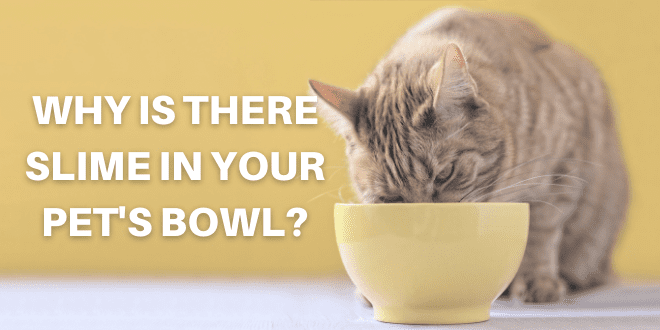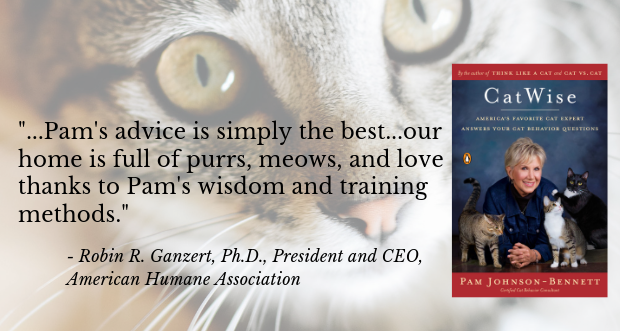
How often have you noticed a slimy build-up on your pet’s water or food bowl? Do you just refill the bowls without washing? If so, you could be putting your cat or dog’s health at risk.
What is That Slime in Your Pet’s Bowl?
The bacteria on your pet’s tongue sticks to the bowl. If the bowl remains unwashed, the bacteria build up into a biofilm which can contaminate food or water. Biofilm feels like a thin slime to the touch and is made up different bacteria that bind together. There are good bacteria and bad. Unfortunately, as they bind together into this slimy, glue-like substance, it contaminates the water and food. The biofilm may contain bacteria that can include E. coli, listeria, salmonella, staphylococcus aureus, and more. Biofilm can lead to health problems such as urinary tract infections and kidney issues. It has also been linked to periodontal disease in cats and dogs.
Biofilm on your pet’s bowl can have an offensive odor that you can’t detect but your pet’s sensitive nose can.
The NSF (National Sanitation Foundation) did a study in 2011 where they had 22 families swab 30 everyday household items. The results revealed that pet water bowls were the 4th most germ-filled items in homes (the kitchen sponge ranked #1).
How to Prevent Biofilm
- Wash food and water bowls every day. If free-feeding dry food, don’t just top it off. This is another good reason to consider switching to scheduled meals so you can keep the food bowl cleaner. At the very least for free-feeding, only portion enough food for the day so you can thoroughly wash the bowl every evening.
- If washing bowls by hand, use hot, soapy water. Get the water as hot as you can safely tolerate. Use a separate sponge to wash the pet bowls from the one you use for your own dishes.
- When washing the bowls in the sink, be sure to disinfect the sink afterward with a diluted bleach solution.
- Wash your hands after cleaning pet bowls.
- Sterilize bowls once a week by placing in the dishwasher. If using plastic bowls, place on the top rack to prevent melting during hot washing cycle.
- Use stainless steel, glass, or ceramic bowls because they’re easier to clean. Plastic bowls are too porous and can get scratched, which makes it easier for bacteria to accumulate. Plastic is also linked to feline acne flare-ups.
- Pet water fountains can also harbor biofilm so be sure to clean those daily as well. Follow manufacturer’s directions regarding maintenance and filter replacement.
Need more information?
If you have questions about your cat’s health or nutrition, consult with your veterinarian. This article is for general information purposes only and is not intended as a medical diagnosis and is not a replacement for your cat’s veterinary care.
If you’d like to learn more about cat behavior and training, refer to the books by best-selling author, Pam Johnson-Bennett. Books are available at your favorite bookstore as well as online. We have a link to Amazon on our website.


